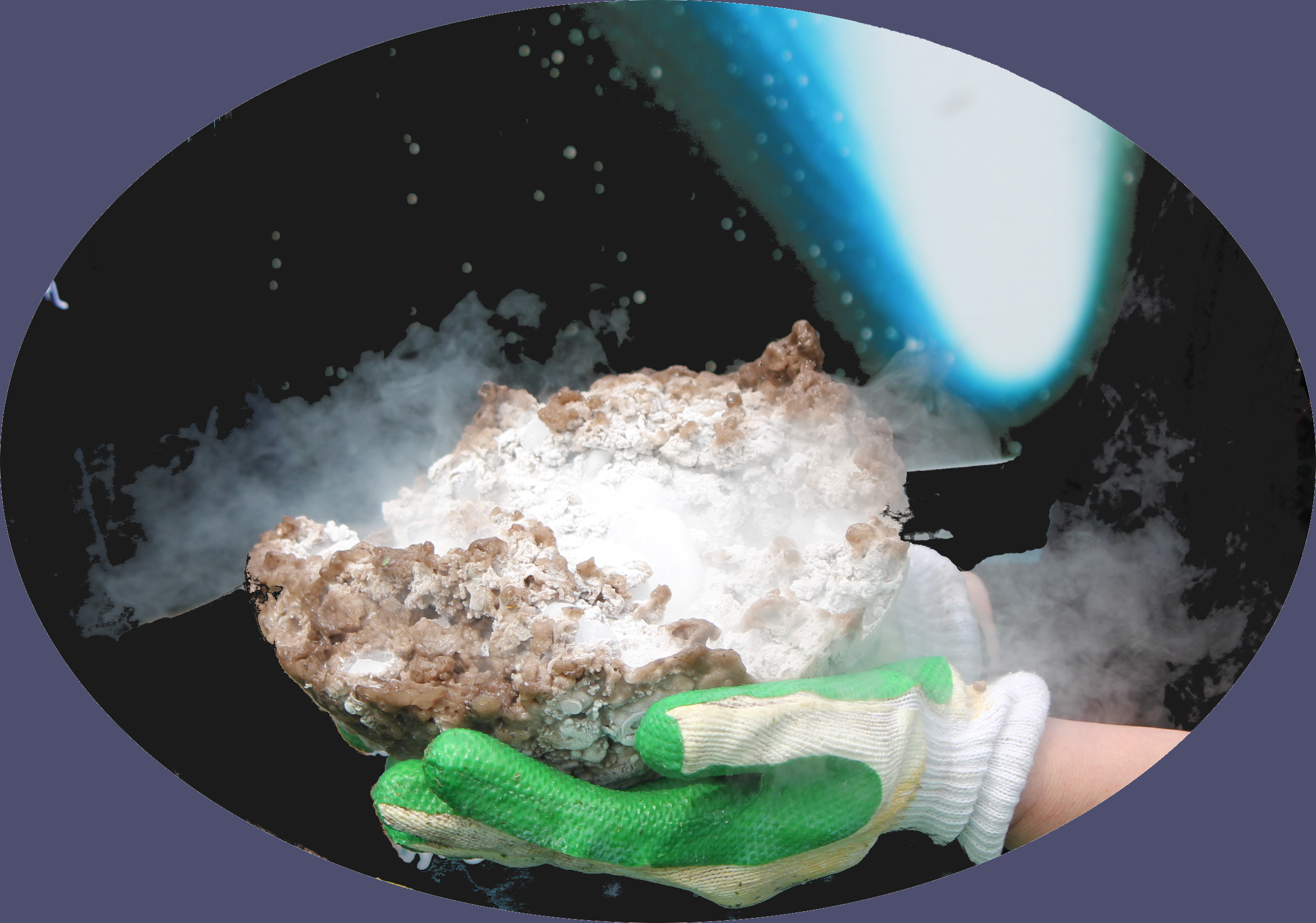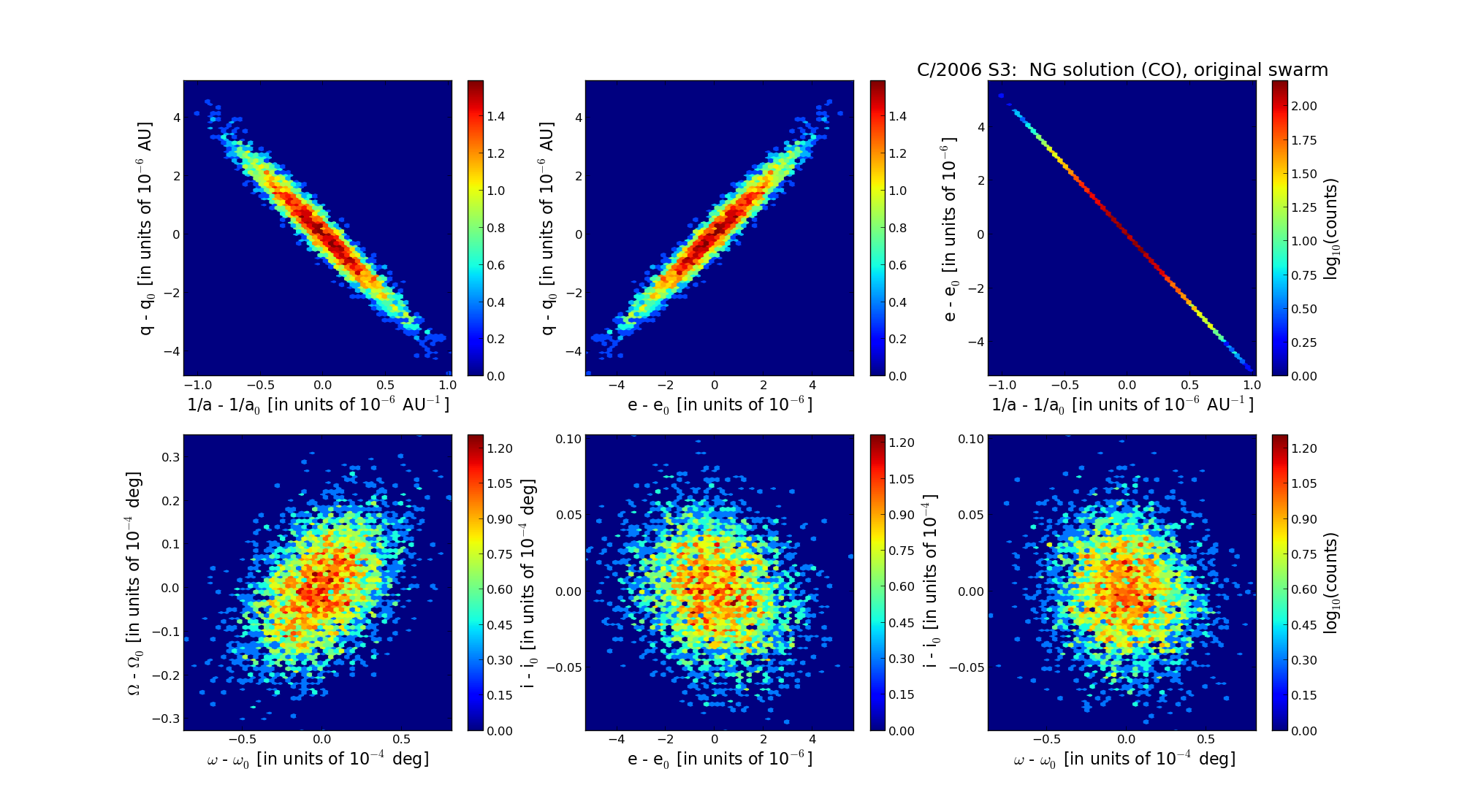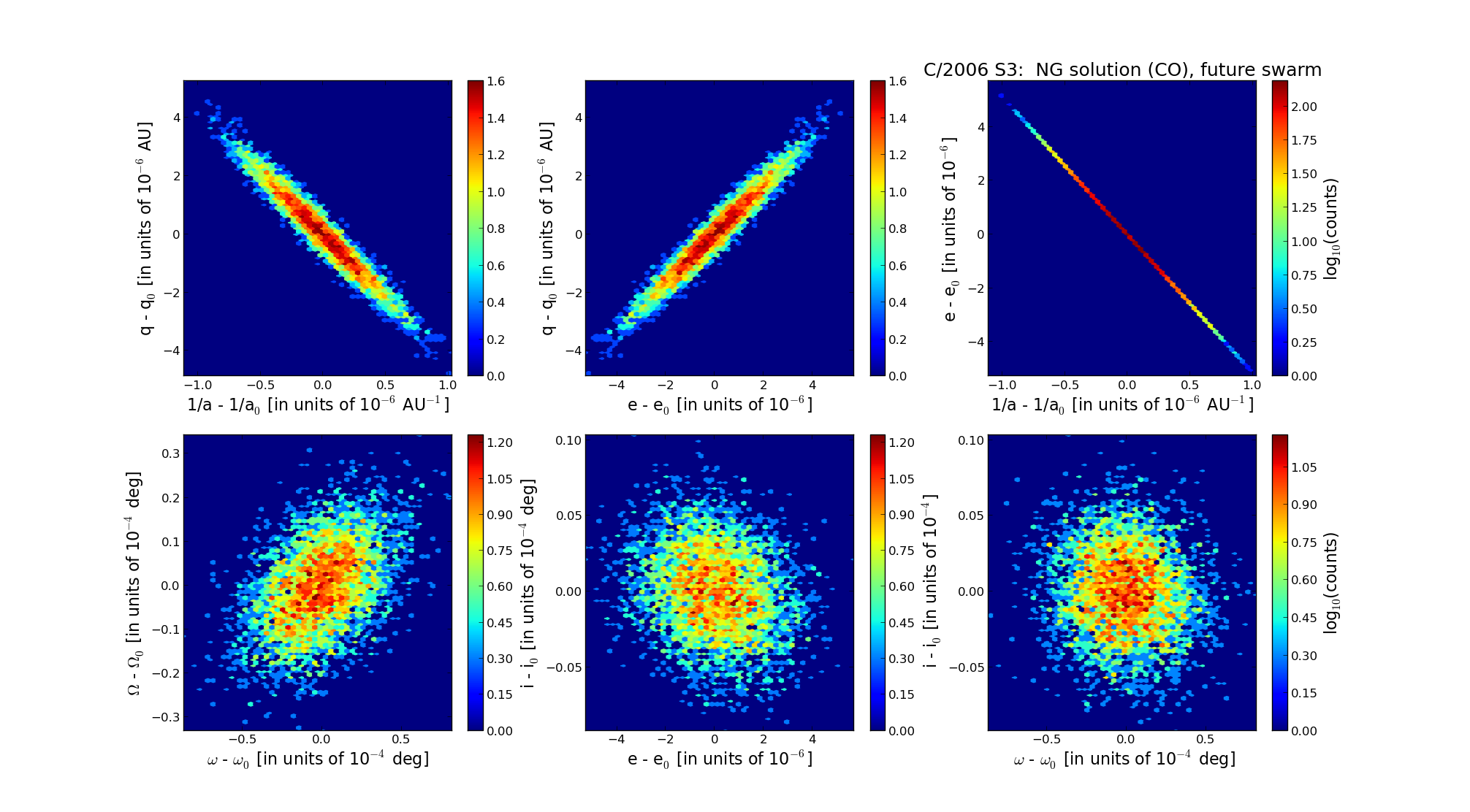| Solar System Dynamics & Planetology Group |
 |
C/2006 S3 LONEOS |  |
| Solar System Dynamics & Planetology Group |
 |
C/2006 S3 LONEOS |  |
| number of observations | 6480 |
| number of residuals | 12847 |
| data interval | 1999 Oct. 13 — 2016 May 5 |
| rms [arcsec] | 0.53 |
| orbit quality class |
| Epoch (TT) | 20120423.0 | = JD 2456040.5 |
| time of perihelion passage (TT) | 20120416.320034 | ± 0.000169 |
| perihelion distance | 5.13111870 | ± 0.00000135 |
| eccentricity | 1.00349158 | ± 0.00000159 |
| argument of perihelion [deg] | 140.128874 | ± 0.000023 |
| longitude of the ascending node [deg] | 38.370826 | ± 0.000009 |
| inclination [deg] | 166.032639 | ± 0.000003 |
| inverse semimajor axis [10-6 au-1] | -680.47 | ± 0.31 |
| Nongravitational parameters [10-8 au/day2] | A1 = 1.58860 ± 0.03639 | A2 = 1.71370 ± 0.04051 | A3 = 0.17961 ± 0.00655 |
| where g(r)-like function (CO sublimation) were applied: | r0 = 10.0 | m = 2.0 | n = 3.0 | k = 2.6 |

| Epoch (TT) | 17061114 | |
| time of perihelion passage (TT) | 20120415.852860 | ± 0.000168 |
| perihelion distance | 5.13370133 | ± 0.00000133 |
| eccentricity | 0.99995071 | ± 0.00000158 |
| argument of perihelion [deg] | 140.027303 | ± 0.000023 |
| longitude of the ascending node [deg] | 38.303894 | ± 0.000009 |
| inclination [deg] | 166.015363 | ± 0.000003 |
| inverse semimajor axis [10-6 au-1] | 9.60 | ± 0.31 |

| Epoch (TT) | 23170425 | |
| time of perihelion passage (TT) | 20120415.069048 | ± 0.000167 |
| perihelion distance | 5.13278473 | ± 0.00000139 |
| eccentricity | 1.00018065 | ± 0.00000158 |
| argument of perihelion [deg] | 140.119961 | ± 0.000023 |
| longitude of the ascending node [deg] | 38.447615 | ± 0.000009 |
| inclination [deg] | 166.034242 | ± 0.000003 |
| inverse semimajor axis [10-6 au-1] | -35.20 | ± 0.31 |